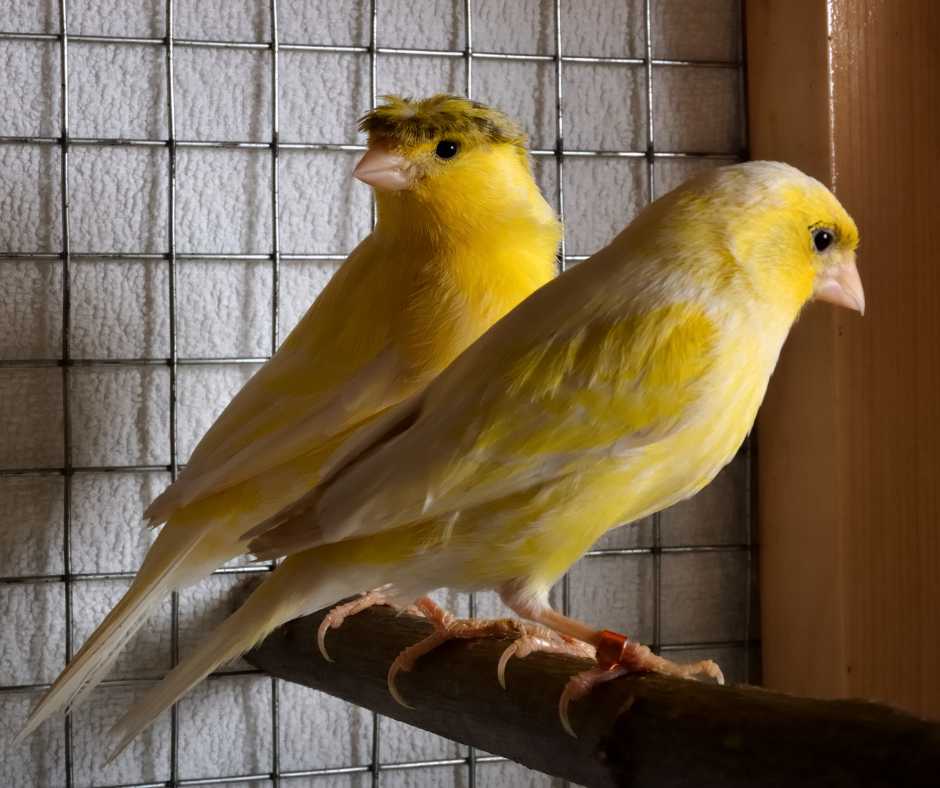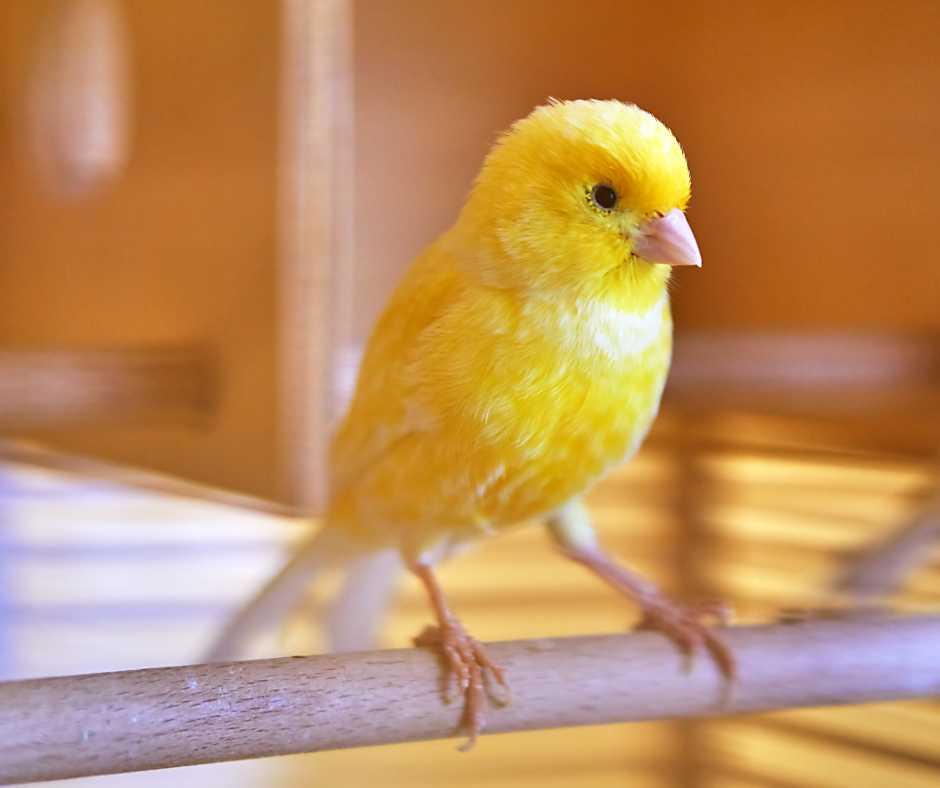Have you ever wondered about the secret to training a canary? It’s a bit like unlocking a mystery, isn’t it? How do these tiny, vibrant birds learn to trust and interact with us?
If you’ve ever faced the challenge of trying to train a canary, you know it’s only sometimes a walk in the park. But what if I told you that with the right approach, it could be a rewarding and even fun experience?
In this blog, we’ll dive deep into the process of how to train a canary, exploring everything from creating a welcoming environment to mastering advanced bonding techniques.
So, get ready to embark on a journey that will not only teach you about canary training but also unveil the joys of feathered friendship.
Understanding Your Canary: The Foundation of Taming
Creating a Safe and Welcoming Environment
Let’s kick off by making sure your canary has the coziest nook to call home. Just like us, these vibrant little birds need a calm and loving space. Think of it as setting up a chill zone that’s all theirs. Their cage should be their sanctuary, you know?
A place where they feel snug and secure, away from the hustle and bustle. Loud noises and unexpected movements? Big no-nos. They can scare our feathery pals. Keeping their environment serene is like laying down the welcome mat for trust and bonding.
Observing and Understanding Canary Behavior
Now, it’s time to put on your detective hat! Canaries, oh boy, they’re quite the communicators. Happy chirps and playful fluttering? That’s your canary’s way of saying, “Life’s good!”
But if you spot them looking a bit down, maybe huddled up or quiet, that’s their way of telling us they need a moment. It’s all about tuning into these little cues. Spotting whether they’re over the moon or a bit under the weather is super important for this taming adventure.
Want to know how to train parrot? Check this article out!!

Choosing the Right Canary: Young vs. Adult
Let’s chat about picking your feathery friend. It’s a bit like choosing whether to adopt a playful puppy or a wise, mature dog. Both are awesome but in different ways.
Young canaries, those little ones under six months old, are often eager beavers when it comes to taming. They’re curious, adaptable, and ready to bond. Older canaries? They bring their charm!
Sure, they might need a tad more patience and TLC, but they can also transform into loving, hand-tamed pals. Remember, every bird, young or old, has its sparkling personality!
Here is a quick comparison of young vs adult canaries. Check that out:
Young Canary vs. Adult Canary: A Quick Comparison
| Young Canary (<6 months) | Adult Canary |
| Eagerness to Learn: Like curious kiddos, young canaries are super keen to explore and learn new things. | Set in Their Ways: Older canaries have their habits, but don’t let that fool you – they can still learn and bond with you! |
| Adaptability: They quickly adapt to new environments and training routines. | Extra Patience Needed: They may take a bit longer to adjust to changes and new training methods. |
| Bonding Time: You might find they bond with you quicker, given their impressionable age. | Deep Bonds Over Time: The bond might take longer to form, but it can be just as deep and rewarding. |
| Training Ease: Generally easier to hand tame and train in tricks. | Experience Counts: Their life experiences can make them fascinating companions with unique personalities. |
Keep in mind what we’ve learned: the key to success lies in “canary hand taming,” building trust, and crafting a cozy habitat. Whether you’re crafting a calm space or tuning into your canary’s cues, each bird, young or old, brings its special joy.
Remember, every canary, regardless of age, is a tiny treasure ready to fill your life with song and happiness! For a deeper look into caring for young and adult canaries alike, the petMD offers excellent guidance.
You may also read: How to Train a Budgie

Preparing for Taming: Establishing Trust and Routine
Now, the real fun begins! Taming your canary is all about consistency and patience.
Preparing for Taming: Establishing Trust and Routine
Building trust with your canary is a lot like making a new buddy. You wouldn’t just rush in; you’d take your time, right? Well, your canary feels the same way. Hang out near their cage daily, chatting in a soft voice or humming your favorite tunes.
This isn’t just small talk; it’s about letting them get comfy with your presence. Imagine you’re telling a shy new friend, “Hey, I’m cool. We can be pals.”
The Role of Consistency and Patience
Consistency is king in the canary world. Set a regular schedule for your hangout sessions. Why, you ask? Well, canaries, like us, love a bit of routine. It makes them feel secure and understood. Picture having a coffee date at the same time each day – you start looking forward to it, right?
Your canary feels the same about your scheduled chats. And patience? That’s the golden ticket. It’s about giving your feathered friend the time they need to see you’re trustworthy.
Communicating with Your Canary
Now, about chatting with your canary. Sure, they might not get every word you say, but they totally vibe with the tone of your voice. Speaking gently and soothingly is like sending them a message in a bottle, floating on calm seas.
Share bits about your day or a goofy joke. This regular banter helps them recognize you’re a friend. Before long, they’ll be eagerly awaiting your stories!
The Taming Process: Step-by-Step Instructions
Alright, folks, it’s time to get hands-on with our canary taming mission! Follow these six steps to train your canary successfully:
- Gentle hand interaction with treats.
- Coax canary onto the hand with treats.
- Boost confidence inside the cage.
- Introduce them to a safe, wider space.
- Train with treats for free flight.
- Bond through feeding and playtime outside the cage.
Let’s dive into each step with some tips and tricks.
Step 1: Initial Hand Interaction
First off, gently place your hand in the cage with a small treat – think of it as a friendly handshake. Remember, no jerky movements. We’re going for slow and steady. It’s all about making your canary feel safe with your presence. Just like it’s the start of hand-taming, patience is your best friend here.
Step 2: Encouraging the First Perch
Now, let’s entice your feathered friend onto your hand. Hold out a treat and wait for them to approach. It’s like inviting them to a mini party on your hand! With time, they’ll hop right on, eager for the treat. This step is a bit like creating a routine and a sense of anticipation.
Step 3: Building Confidence Inside the Cage
Here, we boost their confidence. Keep your hand inside the cage, moving it gently around. It is about familiarizing them with your presence in their space. It’s like giving them a tour of their new, friendly neighborhood. Remember, free flight starts with confidence inside the cage!
Step 4: Introduction to Free Space
Adventure time! Let’s introduce them to a bit more space. Make sure the room is bird-safe: windows closed, no fans, no other pets lurking around. It’s their first step into a wider world. Ensuring they’re not stressed during this exploration is key.
Step 5: The Joy of Free Flight and Recall Training
The magic unfolds now – free flight and recall training. Coax them to fly to you using treats. Think of it as a feathery game of fetch. This step is where you start seeing the joy of their newfound freedom and trust in you.
Step 6: Advanced Bonding: Feeding and Playing
The cherry on top! Time for feeding and playing outside the cage. Offer their favorite seeds or engage with bird-friendly toys. It isn’t just playtime; it’s about forging a deep, lasting bond. You’re not just a caretaker; you’re a friend and a playmate.
So, there you have it – a step-by-step guide to taming your canary, peppered with insights. Remember, each step is a building block towards a beautiful relationship with your canary. Keep it fun, keep it consistent, and most importantly, enjoy each moment of this delightful journey!
Are Canaries Easy to Train?
You’re probably wondering, “Are canaries easy to train?” Well, it’s a bit like learning to play the guitar – it varies for everyone. There are a few key things to consider that influence how smoothly the training will go.
Age Matters
First up, age. Younger canaries, like kids, are often more open to new experiences. They’re curious, adaptable, and can pick up new tricks a bit quicker. But older canaries are still a no-go.
They’ve got their own set of awesome qualities and, with a little extra patience, can be just as rewarding to train. Think of it as teaching an old dog new tricks – totally doable!
Temperament Plays a Role
Then there’s personality or temperament. Every canary is unique, with its own character. Some are outgoing and bold, while others might be a bit shy. It’s like meeting different people – everyone’s got their vibe. Understanding your canary’s personality helps tailor the training to suit them best.
Consistency is Key
Now, let’s talk about consistency. Regular training sessions, much like practicing a sport or an instrument, make a huge difference. Our feathered friends love a routine, and sticking to a schedule helps them learn faster and feel secure. Consistency, routine, and a stress-free environment are golden for canary training success.
Patience and Realistic Expectations
Patience is your best friend on this journey. Training a canary isn’t a race; it’s more like a leisurely stroll through the park. Set realistic goals and celebrate the small victories along the way. Every step forward is a big win!
Read more: How to Train Lovebirds

Creating a Lasting Bond: Advanced Tips and Tricks
Alright, you and your canary are ready to kick things up a notch! Let’s dive into some cool ways to deepen that special bond. It’s about making each day with your canary not just fun but a real adventure.
- Teach Some Fun Tricks: How about teaching your canary to do some neat tricks? Imagine them fetching a tiny ball or swooping through hoops. It’s not just entertaining; it keeps their little brains buzzing with excitement.
- Switch Up the Scenery: Regularly changing their toys and playthings keeps their environment fresh and intriguing. It’s like rearranging your room for a new look – keeps things exciting!
- Music for the Soul: Ever noticed how a good tune can lift your spirits? Some canaries feel the same way! Play some gentle, soothing melodies. Watch them bop to the beat or even sing along!
- Chat and Bond: Spend time just talking to your canary. Share stories or talk about your day. They might not grasp every word, but they’ll feel the warmth in your voice.
- Mealtime Fun: Make feeding time a special event. Try hand-feeding them their favorite treats or introducing new, safe foods for them to explore.
- Mirror, Mirror: Adding a small mirror can be fascinating for your canary. It’s like giving them a buddy to interact with.
- Patience Is a Virtue: Remember, every step forward, no matter how small, is progress. Enjoy the journey, cherish each moment, and watch your bond grow stronger every day.
Use these tips and what we’ve learned about keeping canaries happy and comfy. You’re ready to make a great friendship with your canary. So, give these ideas a try and watch your birdie friend enjoy a place full of love, fun, and chirps!
People Also Asked
How long does it typically take to tame a canary?
It varies! Some canaries start warming up to you in a few weeks, while others might take a few months. It’s all about patience and consistency.
Do canaries prefer certain types of treats during training?
Yes, they usually love small seeds or leafy greens. Just keep the treats small and manageable for their tiny beaks!
Can canaries learn to do tricks?
Absolutely! With patience and practice, canaries can learn simple tricks like fetching or navigating through small hoops.
Is it okay to have more than one canary in the same cage while taming?
It’s usually easier to tame them individually, as they can distract each other. But once tamed, they enjoy the company of their kind.
Do canaries recognize their owners?
Yes, they do! Canaries can recognize and become attached to their owners, responding to their voices and presence.
Wrap Up
And that’s a wrap on our canary training adventure! Remember, teaching your canary is more than just steps; it’s about making a forever friend with lots of patience, understanding, and love.
Every chirp, song, and moment together is a precious part of this adventure. You’re not just training a bird; you’re getting a buddy who’ll fill your days with happiness and songs.
So, cherish every moment, cheer for every little win, and here’s to the amazing friendship you and your canary will have. Happy training, and have fun on this song-filled journey with your feathered pal!

